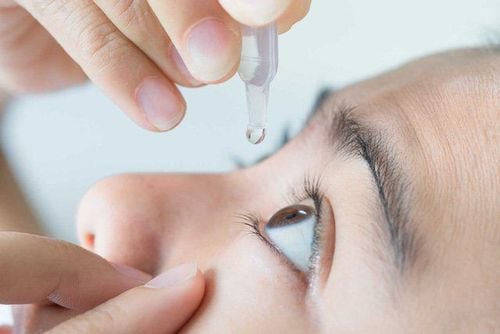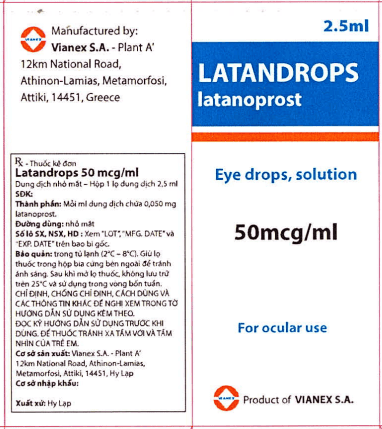This is an automatically translated article.
The article was professionally consulted by Specialist Doctor I Nguyen Thi Bich Nhi - Ophthalmologist - General Surgery Department - Vinmec Nha Trang International General Hospital.Health experts estimate that nearly half of the US population (about 42%) is nearsighted. This number has nearly doubled over the past three decades and shows no sign of stopping. Myopia is not only inconvenient, but in the long run, it also makes the condition worse.
1. Myopia classification
Myopia is the most common refractive error today. To treat myopia, most patients will go to eye hospitals. People with myopia have difficulty seeing distant objects but can clearly see nearby objects. For example, you may not recognize a highway sign until you are only a few meters away. The condition can progress gradually or rapidly, often worsening in childhood and adolescence.Causes of myopia include:
The axis of the eyeball in the eye is longer than normal Often looking too close The lens and cornea have too high focusing power Myopia includes some of the following types:
Simple myopia
This is the most common condition, usually occurring in children between the ages of 10-18. For people with simple myopia, myopia will be less than 6 diopters and is accompanied by astigmatism.
Eyes often have to work at close distances, causing the lens to swell and not collapse again, which is the cause of myopia. The disease is often caused by genetics and working mode. The disease will develop for a while and stop to a certain extent.
Secondary myopia
Here are some causes of secondary myopia, including:
Vitreous fibrosis Some prescription drugs cause side effects High blood sugar and others

Làm việc liên tục trong khoảng cách gần khiến mắt bị mắc cận thị đơn thuần
A condition where vision is reduced at night or when the light is low, but the eye's vision is still normal during the day is called night myopia. For people with myopia at night, the pupil will adjust to dilate to capture more light, resulting in a distorted image when reaching the eye.
False myopia
False myopia is a condition in which the eyes increase accommodation, causing the ciliary bodies - in charge of adjusting the eye's ability to adjust - to stiffen, causing temporary impairment of distance vision.
After a period of rest, vision will recover. The signs of false myopia are the same as those of normal myopia.
Degenerative myopia
This is the most severe myopia condition, patients often have myopia of more than 6 diopters accompanied by degeneration of the posterior part of the eyeball. The eyeball's axis is continuously lengthened, causing the degree of myopia to continuously increase, the degenerative myopia condition will become more and more severe.
If people with degenerative myopia are not treated in time, it will cause dangerous diseases such as retinal degeneration, retinal detachment, glaucoma... seriously affecting the health of the eyes.
The disease is quite rare, usually develops at an early age, so it is necessary to regularly take the child to a reputable eye hospital.

Nên cho trẻ đi khám mắt thường xuyên để phát hiện và điều trị bệnh sớm
2. Risk of nearsightedness
Myopia usually occurs in people between the ages of 8 and 12. However, the disease can affect all subjects, all ages. The disease can be controlled by reducing risk factors.Some factors increase the risk of myopia, such as:
Genetics: children whose parents are nearsighted often have a higher risk of developing the disease. Reading, watching TV, looking at the computer a lot Due to environmental conditions, such as spending less time playing outside
3. Treatments to slow or stop the progression of myopia
While eyeglasses, contact lenses, eye drops and refractive surgery can control the effects of nearsightedness and allow patients to see better at long distances. The aim of these treatments is to treat the symptoms of the condition, not to address the cause.When the axis of the eyeball is longer than normal, the retinal tissue and the structures that support the optic nerve stretch and become thinner. This increases the risk of retinal detachment, cataracts, glaucoma, and even blindness. Myopia progresses rapidly, prescription glasses increase, the risk of these diseases is higher.
Children whose parents are nearsighted have a higher risk of developing myopia.
Researchers and clinical practice continue to search for more effective methods to prevent myopia from getting worse over time.
Correct prescription : It's important to make sure your child has the right prescription for their glasses or lenses, and more importantly, over-corrected lenses can actually contribute to progression of myopia. Atropine eye drops: Atropine eye drops are commonly used to dilate the pupils of the eyes as part of an eye exam or before and after eye surgery. In varying doses, depending on the individual case, Atropine eye drops can help slow the progression of nearsightedness. The exact mechanism for this effect is still poorly understood.

Thuốc nhỏ mắt atropine có thể làm giảm sự phát triển của tật cận thị
66%: Myopia increased rate in the US from the early 1970s to the early 2000s 50%: The percentage of the world population will be nearsighted by 2050 4 out of 10: Percentage of adults in the US with myopia 1.25: Daily hours outdoors needed to reduce the chance of a child being nearsighted by 50% Vinmec International General Hospital offers customers Vision Package Refractive error control helps to screen for refractive errors (strabismus, nearsightedness, farsightedness, astigmatism, amblyopia) through general and normal eye exams, and periodic monitoring and management for 1 year for patients. have refractive errors.
Doctor CKI Nguyen Thi Bich Nhi has nearly 10 years of experience in the eye field. Treatment of medical eye diseases as well as eye surgery such as: pterygium, entropion, milia, glaucoma and cataract surgery by Phaco method. Besides, it also treats diabetic retinopathy by intraocular Anti-VEGF injection and ophthalmic surgery. Currently, the doctor is an Eye Doctor in the Department of Medical Examination - Internal Medicine, Vinmec Nha Trang International General Hospital.
If there is a need for consultation and examination at the Hospitals of the National Health System, please book an appointment on the website to be served.
Reference article source: webmd.com
Please dial HOTLINE for more information or register for an appointment HERE. Download MyVinmec app to make appointments faster and to manage your bookings easily.













